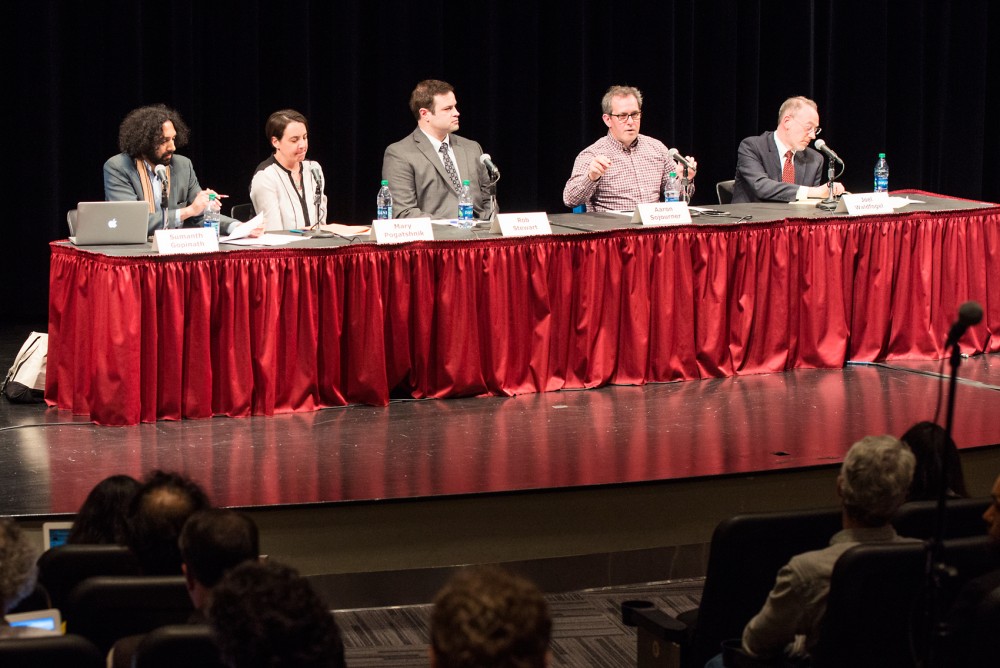To the University of Minnesota, faculty unionization attempts are nothing new. Thus far, neither is the outcome.
University faculty members have tried to unionize three times — in 1978, 1981 and 1996 — but each attempt ended in failure.
The current efforts for unionization started in the fall of 2015 and in January of 2016, when the Service Employees International Union filed for unionization.
John Budd, a professor at Carlson School of Management, said the biggest gain from unionization is that the administration becomes legally obligated to bargain wages, hours, terms and conditions regarding contracts and duties.
Without a union, the administration can consult faculty, but ultimately can take unilateral actions, and those against faculty unionization say it compromises their freedom and independence, Budd said.
If faculty members vote to unionize this year, it would create the largest faculty union in the nation.
This time, contingent faculty — lecturers and teaching specialists — are involved in the process.
Mary Pogatshnik, a Spanish and Portuguese senior teaching specialist, said the administration replaces tenured faculty with contingent faculty to make management of personnel easier.
Even though there are differences in interests between tenure track and contingent faculty, working together in a union is the best to achieve those interests, she said.
Two other attempts at unionization began in 1978 and 1981, both of which failed to gain enough votes from faculty members.
Three unions — the American Association of University Professors, University of Minnesota Federation of Teachers and University of Minnesota Education Association — fought for nearly five years up to 1978, in a campaign to represent University faculty.
The vote for a union failed overwhelmingly that year, with more than half the votes going for no union at all.
In 1981, the AAUP and UMEA campaigned to unionize faculty to help negotiate salaries and raises, but that effort failed as well.
The most exhaustive efforts to create a union at the University happened in 1996, when tenure rule changes proposed by the Board of Regents met strong criticism from faculty.
The Minnesota Legislature told Regents that $6.6 million in appropriations to the University hinged on their ability to restructure the tenure program. The Regents came forward with a list of proposals for tenure rule changes that same year.
The changes included the possibility of tenured faculty layoffs after departments closed or were restructured, stricter post-tenure administrative reviews and possible pay-reductions.
The proposals met immediate backlash from faculty members and the Faculty Consultative Committee responded by submitting amendments to the rule changes.
The amendments included a longer, pre-tenure probationary period, more temporary teaching assignments and a post-tenure peer-review process for punishments — like pay reduction or termination.
The Regents were hesitant to the amendments, but by fall of 1996, the University Faculty Alliance was able to get signatures from one-third of the faculty to set up an election for the union.
The rising tensions led to a cease-and-desist letter to the Regents from the Bureau of Mediation Services, barring them from working on any tenure rule changes.
Shortly after, Regent Jean Keffeler — who strongly supported the rule changes — resigned.
As the conflict continued, some worried the University’s image was sullied and members of the faculty, administration and city government called for a resolution.
By the time the compromise was finished, a date for the union vote was set and a vote had to be casted.
In February of 1997, the union failed to pass by 26 votes.
Budd, who was at the University during this time, said if the Regents had not revised their plans before faculty casted their vote, the University might have a union now.














